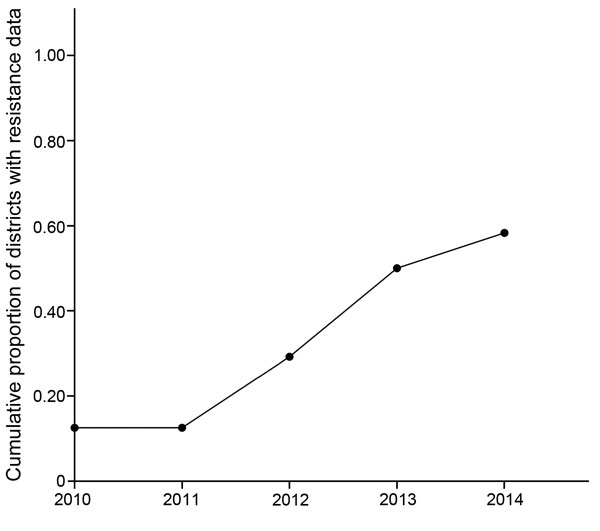Volume 22, Number 5—May 2016
Perspective
An Operational Framework for Insecticide Resistance Management Planning
Figure 2

Figure 2. Increase in the number of geographic locations producing data on insecticide resistance in malaria vectors, Zambia, 2010–2014.
1These authors contributed equally to this article.
Page created: April 13, 2016
Page updated: April 13, 2016
Page reviewed: April 13, 2016
The conclusions, findings, and opinions expressed by authors contributing to this journal do not necessarily reflect the official position of the U.S. Department of Health and Human Services, the Public Health Service, the Centers for Disease Control and Prevention, or the authors' affiliated institutions. Use of trade names is for identification only and does not imply endorsement by any of the groups named above.